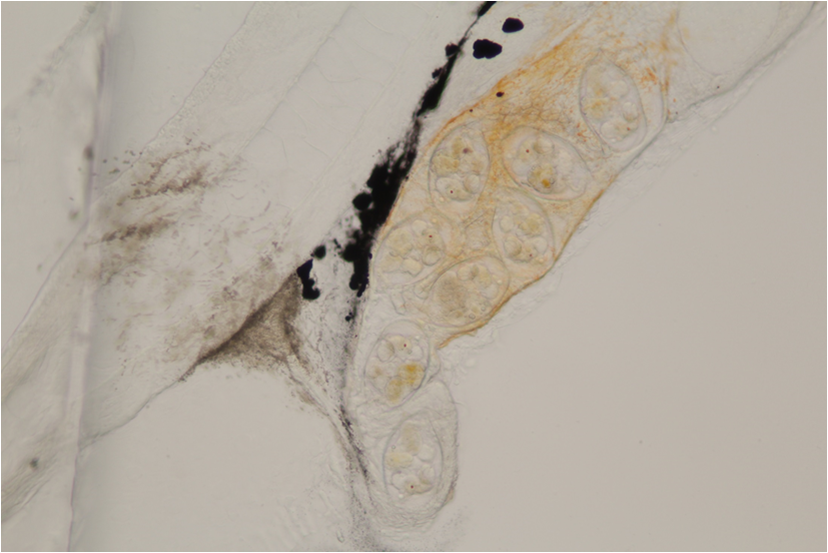
Colurella adriatica in the gut of a first feeding yellow tang larvae. Photo
credit: Matthew L. Wittenrich
We first spotted Colurella adriatica in one of our larval rearing systems that had been fed wild zooplankton. It exhibited some characteristics that we thought might be advantageous for rearing of small pelagic larvae; such as tangs. After being isolated from the dormant system, a review of photographs revealed a single Colurella in the gut of a first feeding bartletts’ anthias. We found this encouraging and began to explore the use of this critter. Once identified, a culture of Colurella was established to not only begin examining the culture characteristics but also its efficacy as a live feed. To date, Colurella has been fed to and consumed by bartletts’ anthias, yellow tang, Pacific and Atlantic blue tangs, ocellated dragonet, leaf scorpionfish, and pomacanthid angelfish larvae. Only the ocellated dragonet and pomacanthid angelfish larvae reached metamorphosis, but mortality in the other species can’t yet be attributed to the use of an inappropriate live feed. In a study conducted at TAL comparing light intensity and feeding incidence within yellow tang larvae; larvae were provided equal amounts of Colurella and Parvocalanus crassirostris (the copepod previously used in yellow tang larval studies at the Oceanic Institute in Hawaii). Of the 480 larvae sampled with food in their gut, all but 7 had only consumed Colurella. LINK










0 Comments